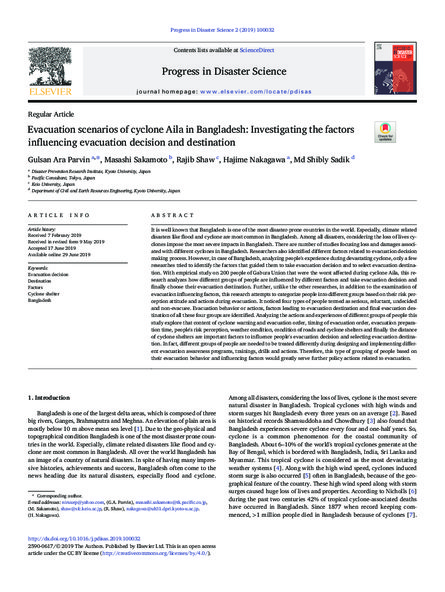
It is well known that Bangladesh is one of the most disaster-prone countries in the world. Especially, climate related disasters like flood and cyclone are most common in Bangladesh. Among all disasters, considering the loss of lives cyclones impose the most severe impacts in Bangladesh. There are number of studies focusing loss and damages associated with different cyclones in Bangladesh. Researchers also identified different factors related to evacuation decision making process. However, in case of Bangladesh, analyzing people's experience during devastating cyclone, only a few researches tried to identify the factors that guided them to take evacuation decision and to select evacuation destination. With empirical study on 200 people of Gabura Union that were the worst affected during cyclone Aila, this research analyzes how different groups of people are influenced by different factors and take evacuation decision and finally choose their evacuation destination. Further, unlike the other researches, in addition to the examination of evacuation influencing factors, this research attempts to categorize people into different groups based on their risk perception attitude and actions during evacuation. It noticed four types of people termed as serious, reluctant, undecided and non-evacuee. Evacuation behavior or actions, factors leading to evacuation destination and final evacuation destination of all these four groups are identified. Analyzing the actions and experiences of different groups of people this study explore that content of cyclone warning and evacuation order, timing of evacuation order, evacuation preparation time, people's risk perception, weather condition, condition of roads and cyclone shelters and finally the distance of cyclone shelters are important factors to influence people's evacuation decision and selecting evacuation destination. In fact, different groups of people are needed to be treated differently during designing and implementing different evacuation awareness programs, trainings, drills and actions. Therefore, this type of grouping of people based on their evacuation behavior and influencing factors would greatly serve further policy actions related to evacuation.